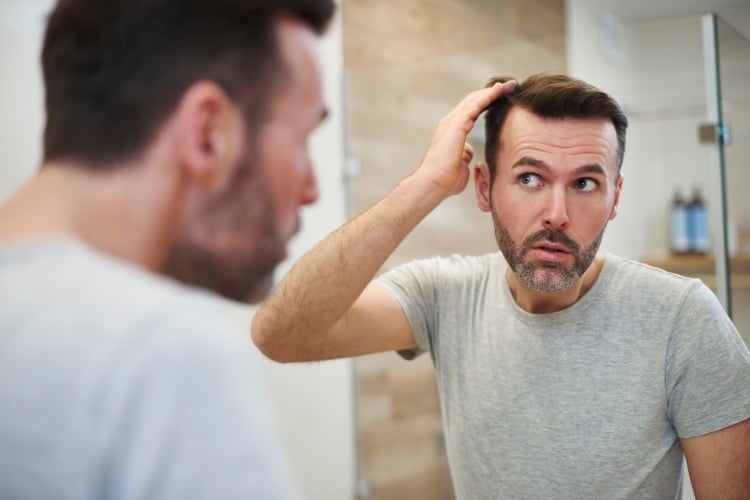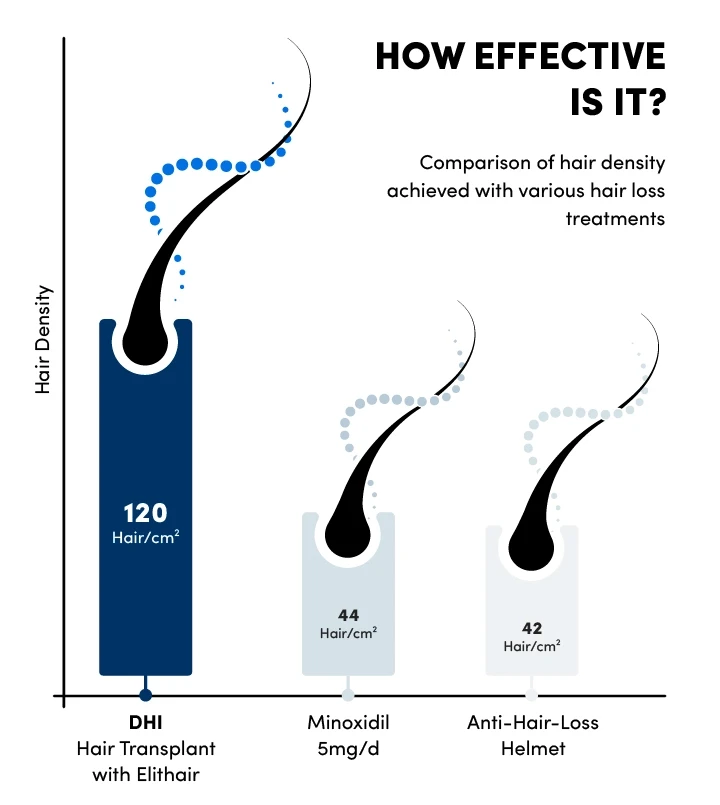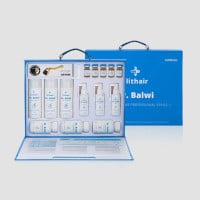
Laser cap for hair growth – what are they, and do they work?
The search for an effective hair loss solution has birthed a spectrum of methods, including medications, hair transplants, and laser light therapy that aims to stop hair loss.
But is this invention all that it claims to be? Will it revolutionise the hair loss industry, or does it still have hurdles to overcome? Below, we weigh the current hair loss treatment options with the laser cap for hair growth and the Niostem anti hair loss helmet. We will also shed light on its functionality, applications, as well as potential pros and cons.
- What Is the Laser Cap for Hair Growth?
- Will the Laser Cap Help With Hair Loss?
- How Often Should I Use the Laser Cap to Treat Hair Loss?
- Can I Combine the Laser Cap for Hair Loss With a Traditional Hair Transplant?
- How Effective Is the Niostem Helmet?
- What Are the Best Alternative Treatments to a Laser Cap for Hair Loss?
- How Does Elithair Treat Hair Loss?
- FAQ
What Is the Laser Cap for Hair Growth?
The laser cap for hair growth is a wearable device designed to stimulate hair follicles using low-level laser therapy (LLLT).
The laser cap resembles a regular cap or helmet and contains small, low-power lasers that emit light wavelengths proven to promote hair regrowth. These lasers penetrate the scalp, stimulating cellular activity and improving blood circulation to the hair follicles, which can result in thicker, healthier hair over time.
The popularity of laser caps for hair growth has surged due to their convenience and effectiveness. Unlike traditional in-office laser therapy, which requires frequent visits to a clinic, laser caps offer the convenience of at-home treatment. In fact, they are non-invasive, painless and can be used discreetly while performing daily activities.
Will the Laser Cap Help With Hair Loss?

Studies suggest that LLLT devices like laser caps can help with hair loss, particularly in individuals experiencing conditions like androgenetic alopecia (male or female pattern baldness).
In a study designed to investigate at-home laser caps, results demonstrated that constant illumination over the areas of the scalp covered by a laser hair cap showed a 37% increase in hair growth in males and a similar increase in females.
However, in a further study, it was shown that laser caps for hair growth works best on individuals with mild to moderate hair loss and may be less effective for those with extensive baldness. In fact, the study concluded that LLLT was most effective in individuals with thinning hair rather than those with complete baldness.
How does laser therapy works?
Laser therapy for hair loss utilises low-energy laser beams to stimulate hair growth. However, the exact internal mechanism remains unclear. Disadvantages include varying results, repeated session time, high costs, and potential skin irritations and headaches.
It’s evident that results vary, and it’s always best to have an individual assessment as to the best solution for your unique hair loss issues. It’s clear they may not serve as a replacement for a hair transplant.
How Often Should I Use the Laser Cap to Treat Hair Loss?
The frequency of laser cap usage for treating hair loss typically varies depending on the specific device and manufacturer’s recommendations. However, most laser caps are designed for regular use, with sessions lasting around 20 to 30 minutes each. Generally, users are advised to use the laser cap at least three to four times per week for optimal results.
Can I Combine the Laser Cap for Hair Loss With a Traditional Hair Transplant?
It’s possible to combine a laser cap for hair loss with a traditional hair transplant procedure. While the laser cap primarily aims to stimulate hair growth and maintain existing hair, a hair transplant involves transplanting healthy hair follicles from one area of the scalp to another.
The laser cap may also help enhance the results of the hair transplant by promoting faster healing, reducing inflammation, and improving the overall health of the existing hair follicles.
However, it’s essential to consult with a healthcare professional to determine the most suitable treatment plan tailored to your individual needs.
How Effective Is the Niostem Helmet?

This anti hair loss helmet created by the German company Niostem works differently than a laser cap – instead using bioelectric stimulation. Dr. Chacón-Martínez, a researcher specialising in hair stem cells and skin biology, is the brain-child behind it.
The helmet aims to halt hair loss and promote growth without medications or invasive procedures.
Hair density matters
In the pilot study, the developers found that the Niostem helmet can achieve a hair density of around 42 hairs per square centimetre. In comparison, hair transplants using the DHI method achieve a significantly higher hair density of around 120 hairs per square centimetre. Medications, on the other hand, achieve lower values of approximately 12.3 hairs per square centimetre for Minoxidil and 7.2 hairs per square centimetre for Finasteride.
No specific studies on the anti-hair-loss helmet, apart from Niostem’s pilot study, currently exist. Since the helmet is still in the testing phase, its effectiveness calls for further research.
What Are the Best Alternative Treatments to a Laser Cap for Hair Loss?
There are many other effective treatments on the market for restoring areas with complete hair loss. These include:
Hair transplant
A hair transplant is a surgical procedure that involves relocating hair follicles from a donor area to areas of hair loss. It provides a permanent solution to hair loss and can achieve natural-looking results.
Topical medications
Minoxidil is a common medication used to slow down hair loss and strengthen existing hair. While it can yield positive results, this medication has known side effects and require continuous topical application to maintain their effectiveness.
Shampoos
Special shampoos against hair loss are readily available in the market. These contain ingredients like Biotin, Caffeine or Zinc, aimed at promoting hair growth. Usually, shampoos alone do not provide significant results and are primarily used as enhancers in combination with other treatments.
Natural treatments
Various natural treatments, including essential oils, scalp massages, and a nutrient-rich diet, help stimulate hair growth. Though beneficial for maintaining good hair health, the effectiveness of these methods has yet to prove lasting results.
How Does Elithair Treat Hair Loss?
In the future, laser caps and anti hair loss helmets could serve as an alternative to medications, but it will never achieve the quality and hair density of a hair transplant. That’s why Elithair offers hair transplant procedures as part of their comprehensive approach to treating hair loss.
Our skilled surgeons employ advanced techniques such as follicular unit extraction (FUE) to transplant healthy hair follicles from donor areas to areas of thinning or baldness.
Elithair ensures meticulous attention to detail and personalised care throughout the transplant process, from initial consultation to post-operative care, to achieve optimal outcomes for our clients.
Book a consultation with us today and let us restore fullness and confidence.
FAQ
How long does it take to see results from using a laser cap for hair growth?
Results can typically be seen after three to six months of regular use, with more significant improvements after 12 months.
Are there any side effects associated with using a laser cap for hair growth?
Common side effects are minimal but can include scalp irritation, redness, or mild headaches. These are usually temporary and should subside with continued use.
What should I look for when purchasing a laser cap for hair growth?
Consider factors such as the number of laser diodes, the cap’s fit and comfort, battery life, warranty, and reviews from other users to ensure effectiveness and reliability. However, it is important to note that the hair density achieved with a laser cap is well below what is obtained with a hair surgery.
Are laser caps effective for all types of hair loss?
Laser caps are most effective for androgenetic alopecia and may be less effective for other types of hair loss, such as those caused by medical conditions or scarring alopecia.
Is it safe to use a laser cap every day?
While many devices recommend use three to four times a week, it’s important to follow the specific usage guidelines provided by the manufacturer to avoid overuse and potential scalp irritation.


